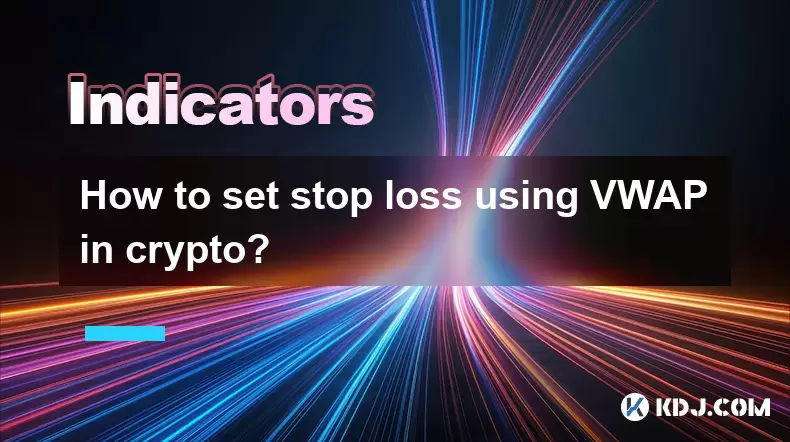-
 Bitcoin
Bitcoin $118400
0.39% -
 Ethereum
Ethereum $3814
2.17% -
 XRP
XRP $3.547
1.34% -
 Tether USDt
Tether USDt $1.000
0.00% -
 BNB
BNB $769.5
2.95% -
 Solana
Solana $191.7
6.36% -
 USDC
USDC $0.9999
0.01% -
 Dogecoin
Dogecoin $0.2722
7.75% -
 Cardano
Cardano $0.8995
5.59% -
 TRON
TRON $0.3158
-0.78% -
 Hyperliquid
Hyperliquid $47.37
4.46% -
 Stellar
Stellar $0.4848
3.54% -
 Sui
Sui $4.031
1.72% -
 Chainlink
Chainlink $20.11
3.94% -
 Hedera
Hedera $0.2832
3.16% -
 Avalanche
Avalanche $26.20
4.27% -
 Bitcoin Cash
Bitcoin Cash $530.5
0.67% -
 Shiba Inu
Shiba Inu $0.00001568
3.59% -
 Litecoin
Litecoin $118.4
1.42% -
 UNUS SED LEO
UNUS SED LEO $8.976
-0.23% -
 Toncoin
Toncoin $3.349
2.54% -
 Polkadot
Polkadot $4.590
2.54% -
 Uniswap
Uniswap $10.56
-0.59% -
 Ethena USDe
Ethena USDe $1.001
0.00% -
 Monero
Monero $327.7
0.39% -
 Pepe
Pepe $0.00001422
2.62% -
 Bitget Token
Bitget Token $4.973
-1.22% -
 Dai
Dai $1.000
0.02% -
 Aave
Aave $331.9
1.59% -
 Bittensor
Bittensor $429.6
-0.56%
How to set stop loss using VWAP in crypto?
VWAP helps crypto traders set dynamic stop losses by reflecting real-time volume-weighted prices, improving risk management and reducing premature exits during volatile swings.
Jul 12, 2025 at 09:56 pm

What is VWAP and Why Is It Important in Crypto Trading?
VWAP, or Volume Weighted Average Price, is a trading indicator used to determine the average price a cryptocurrency has traded at throughout a session, based on both volume and price. It provides traders with insight into the true average price by weighting each trade's price by its volume. In crypto markets, which are highly volatile and often influenced by large trades, VWAP helps identify fair value levels and potential support or resistance zones.
Traders use VWAP not only for assessing entry points but also for setting stop loss orders effectively. Unlike simple moving averages, VWAP dynamically adjusts to real-time volume changes, making it more reliable in fast-moving crypto environments. Using VWAP to set stop loss can help protect capital while avoiding premature exits due to normal price fluctuations.
How Does VWAP Work in Cryptocurrency Charts?
On most trading platforms that support technical analysis, VWAP appears as a single line overlaying the price chart. The calculation involves summing up the product of the typical price (high + low + close divided by 3) and volume for each period, then dividing by total volume over the same period.
For example:
- Multiply the typical price of a candlestick by its volume.
- Accumulate this value across all periods.
- Divide the cumulative value by the total volume to get VWAP.
This process repeats for every new data point, creating a dynamic line that reflects where most trading activity occurred relative to price. In crypto, where whales can cause sudden price spikes, VWAP acts as a stabilizing reference that filters out noise from erratic price movements.
How to Set Stop Loss Using VWAP in Crypto Trading?
To use VWAP for setting stop loss, traders typically observe whether the price is above or below the VWAP line. If the price is above VWAP, it may indicate bullish momentum, and a trader might place a stop loss just below VWAP to protect against a reversal. Conversely, if the price is below VWAP, indicating bearish sentiment, a stop loss can be placed just above VWAP.
Here’s how to implement this strategy step-by-step:
- Open your preferred trading platform and load a chart for the crypto pair you’re interested in (e.g., BTC/USDT).
- Enable the VWAP indicator from the list of available tools.
- Analyze the relationship between current price and VWAP.
- For long positions, place the stop loss slightly below VWAP.
- For short positions, place the stop loss slightly above VWAP.
The key here is to give the trade room to breathe without being stopped out by minor pullbacks. VWAP adapts to volume shifts, so this method tends to be more robust than fixed percentage-based stop losses.
Adjusting Stop Loss Based on VWAP Behavior
VWAP isn’t static — it evolves with each new candle. Therefore, traders must monitor how VWAP behaves over time. A rising VWAP suggests accumulation, while a falling VWAP indicates distribution. When VWAP flattens, it signals indecision in the market.
In practice, if the price pulls back toward VWAP during an uptrend, traders can consider adjusting their stop loss closer to VWAP to lock in profits. On the other hand, if VWAP starts declining and the price remains below it, maintaining a long position becomes riskier, prompting a tighter stop loss placement above VWAP to minimize losses.
Some advanced traders combine VWAP with other indicators like Bollinger Bands or RSI to confirm trend strength before adjusting stop loss levels. This hybrid approach ensures that VWAP-based decisions aren’t made in isolation, increasing the likelihood of successful risk management.
Practical Examples of Setting Stop Loss with VWAP
Let’s assume you're trading Ethereum (ETH/USDT) on a 1-hour chart. You notice ETH is trading above VWAP, suggesting bullish control. You decide to enter a long trade at $2,000.
- Plot VWAP on the chart and see it’s currently at $1,985.
- Place your initial stop loss at $1,975, just below VWAP to avoid early liquidation.
- As the price rises to $2,050, VWAP moves up to $2,000.
- You adjust your stop loss to $1,990 to secure gains and reduce risk.
In another scenario, you’re shorting Litecoin (LTC/USDT) at $75 because the price is consistently below VWAP at $76. Your initial stop loss would be placed just above VWAP at $77. If the downtrend continues and VWAP drops to $74, you might trail your stop loss down to $75.50 to manage exposure.
These adjustments help maintain a balance between protecting capital and allowing room for natural price movement.
Frequently Asked Questions
Can VWAP Be Used on All Timeframes?
Yes, VWAP can be applied to any timeframe, including 1-minute, 1-hour, and daily charts. However, higher timeframes tend to provide more reliable VWAP readings since they incorporate more volume data. Traders should test different timeframes to find what works best with their strategy.
Should I Always Use VWAP as My Only Indicator for Stop Loss?
While VWAP is powerful, relying solely on it can lead to false signals, especially during low-volume periods or sudden volatility spikes. Combining VWAP with volume analysis, moving averages, or momentum oscillators like MACD can improve decision-making accuracy.
How Do I Know if VWAP Is Accurate for the Crypto I’m Trading?
Ensure that the exchange or platform you're using provides accurate volume data. Some smaller-cap cryptocurrencies may have unreliable volume metrics, which can distort VWAP calculations. Stick to major pairs with consistent liquidity for better results.
Is VWAP Suitable for Scalping or Long-Term Holding?
VWAP is particularly effective for intraday trading and swing trading strategies. Scalpers may find it useful for quick entries and exits, while long-term holders can use VWAP as a guide for determining overall trend health.
Disclaimer:info@kdj.com
The information provided is not trading advice. kdj.com does not assume any responsibility for any investments made based on the information provided in this article. Cryptocurrencies are highly volatile and it is highly recommended that you invest with caution after thorough research!
If you believe that the content used on this website infringes your copyright, please contact us immediately (info@kdj.com) and we will delete it promptly.
- Trump Media, Bitcoin, and Congress: A New Era of Crypto Politics?
- 2025-07-22 04:30:12
- Kaspa (KAS) and Cheap Crypto Alternatives: Is Now the Time to Buy?
- 2025-07-22 04:35:12
- Shiba Inu Dreams vs. Bitcoin Solaris Reality: Decoding the Price Explosion Potential
- 2025-07-22 03:50:13
- Riding the Altseason Wave: Crypto Presales and Wallet Raises to Watch
- 2025-07-22 03:50:13
- Dogecoin Price Prediction: Can DOGE Rally to $1 After Recent Surge?
- 2025-07-22 03:55:12
- Crypto Stocks, Stablecoin Law & Trump: A New Era?
- 2025-07-22 02:30:12
Related knowledge

Advanced RSI strategies for crypto
Jul 13,2025 at 11:01am
Understanding the Basics of RSI in Cryptocurrency TradingThe Relative Strength Index (RSI) is a momentum oscillator used to measure the speed and chan...

Crypto RSI for day trading
Jul 12,2025 at 11:14am
Understanding RSI in the Context of Cryptocurrency TradingThe Relative Strength Index (RSI) is a momentum oscillator used to measure the speed and cha...

Crypto RSI for scalping
Jul 12,2025 at 11:00pm
Understanding RSI in the Context of Crypto TradingThe Relative Strength Index (RSI) is a momentum oscillator widely used by traders to measure the spe...

What does an RSI of 30 mean in crypto
Jul 15,2025 at 07:07pm
Understanding RSI in Cryptocurrency TradingRelative Strength Index (RSI) is a momentum oscillator widely used in cryptocurrency trading to measure the...

What does an RSI of 70 mean in crypto
Jul 13,2025 at 06:07pm
Understanding the RSI Indicator in Cryptocurrency TradingThe Relative Strength Index (RSI) is a widely used technical analysis tool that helps traders...

Does RSI work in a bear market for crypto
Jul 16,2025 at 01:36pm
Understanding RSI in Cryptocurrency TradingThe Relative Strength Index (RSI) is a momentum oscillator used by traders to measure the speed and change ...

Advanced RSI strategies for crypto
Jul 13,2025 at 11:01am
Understanding the Basics of RSI in Cryptocurrency TradingThe Relative Strength Index (RSI) is a momentum oscillator used to measure the speed and chan...

Crypto RSI for day trading
Jul 12,2025 at 11:14am
Understanding RSI in the Context of Cryptocurrency TradingThe Relative Strength Index (RSI) is a momentum oscillator used to measure the speed and cha...

Crypto RSI for scalping
Jul 12,2025 at 11:00pm
Understanding RSI in the Context of Crypto TradingThe Relative Strength Index (RSI) is a momentum oscillator widely used by traders to measure the spe...

What does an RSI of 30 mean in crypto
Jul 15,2025 at 07:07pm
Understanding RSI in Cryptocurrency TradingRelative Strength Index (RSI) is a momentum oscillator widely used in cryptocurrency trading to measure the...

What does an RSI of 70 mean in crypto
Jul 13,2025 at 06:07pm
Understanding the RSI Indicator in Cryptocurrency TradingThe Relative Strength Index (RSI) is a widely used technical analysis tool that helps traders...

Does RSI work in a bear market for crypto
Jul 16,2025 at 01:36pm
Understanding RSI in Cryptocurrency TradingThe Relative Strength Index (RSI) is a momentum oscillator used by traders to measure the speed and change ...
See all articles

























































































